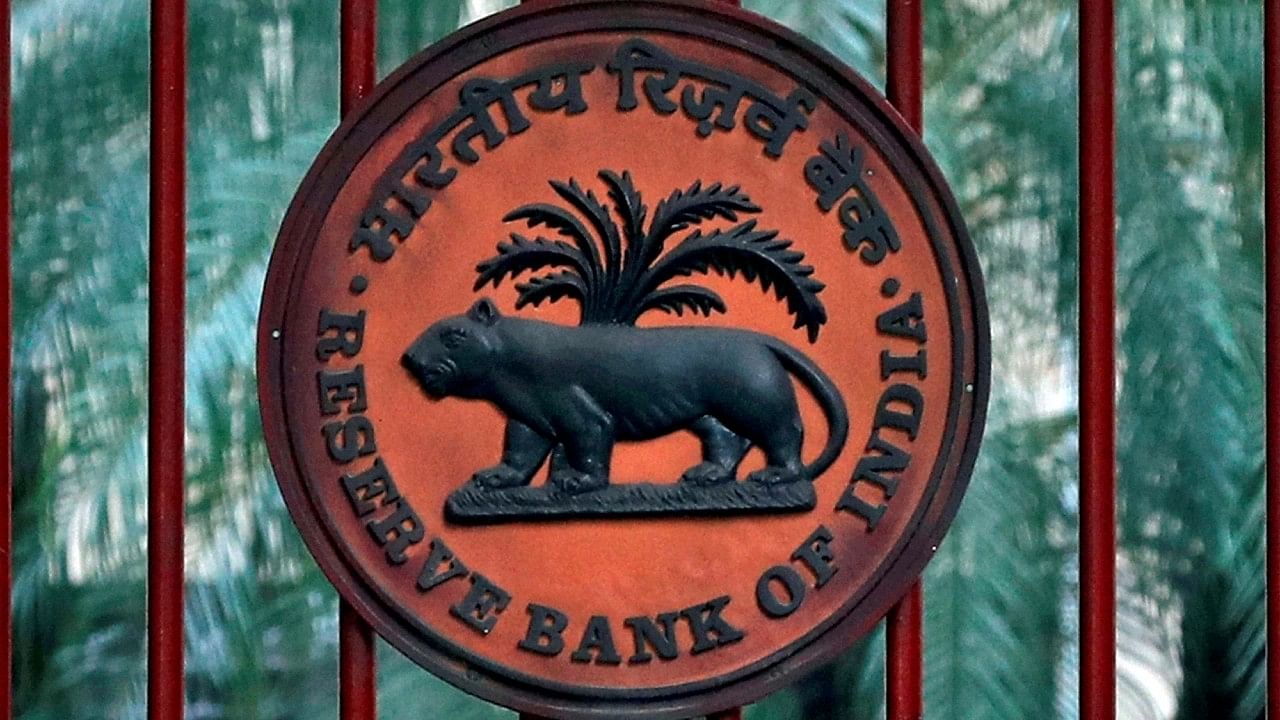
The Reserve Bank of India (RBI) logo.
Credit: Reuters File Photo
The decision of the six-member Monetary Policy Committee (MPC) of the Reserve Bank of India to maintain the repo rate at 6.5% was as expected.
Considering robust GST collections of over Rs 13 lakh crore from April-November 2023, a 12% year-to-date rise, monthly average GST collections of Rs 1.49 lakh crore, consumer price index inflation at 4.8% in November (within the RBI’s upper tolerance limit of 6%), and other positive indicators like the boom in vehicle sales, unemployment at a record low of 3.2%, comfortable forex reserves at $600 billion, Sensex touching an all-time high of 69,825 last week, and surprise GDP Q2 (July-September) growth of 7.6% (YoY), the RBI/MPC increased the GDP growth rate for the current financial year to 7% from the earlier projected 6.5%. However, they retained the inflation projection at 5.4% for the full fiscal year due to concerns about food inflation’s short-term upside risks. A decrease in rabi sowing, a decline in kharif output of major crops, falling water levels in reservoirs, the El Nino effect, and volatile crude oil prices are likely to contribute to high food inflation.
While the RBI’s optimism is justified, the indication that the higher interest rate regime may persist until March 2024 is a serious concern. RBI Governor Shakthikantha Das’ statement that monetary policy must continue to be actively disinflationary to ensure anchoring of inflation expectations and fuller transmission suggests prolonged higher interest rates on personal, vehicle, MSME, corporate, and housing loans.
The MPC at least should have voted for an ‘accommodative’ stance to signal that the repo rate has peaked with no more hikes in the near future, which would have comforted market sentiments.
The absence of a ‘rate reduction signal’ from the RBI, though a token reduction in the repo rate (rate at which banks borrow from the RBI) by at least 25 bps would
have been ideal, will significantly dent the affordable housing segment.
The construction/real estate’ sector, particularly affordable housing, which has linkages with 250 ancillary industries, contributing 10-12% to GDP and employing the highest organised and unorganised workforce (second only to the agriculture sector), will be adversely affected.
Home loan interest rates have surged from a historic low of 6.5% to 9.5%–11%, resulting in an unsustainable increase in EMIs in addition to the extension of loan tenures even beyond the age of 70!
Though ‘luxury housing’—apartments costing Rs 4 crore and above—is showing positive sales of 9,246 units during January–September 2023 as against 4,689 units during the same period last year, the policymakers’ neglect of the affordable housing segment is a serious concern.
The share of affordable housing (Rs 50 lakhs and below) was at a 10-year low during the January–September period due to increased home-loan rates, surging property prices due to higher input costs to the builders, pandemic-induced job losses and reduced incomes, and withdrawal of cash-linked subsidy schemes (CLSS) under the affordable housing schemes. The increase in home loan rates over the last 2 years has shrunk apartment purchase affordability by 12–15%. The housing supply has also sharply fallen to 18% in the first half of 2023 from 23% during the same period in 2022 (Anarock report).
The central and state governments, RBI, NHB, and all stakeholders should urgently revisit the policy loopholes and ‘pain points’ in the affordable housing segment and address the following pain points:
Re-introduce the CLSS under PMAY and, until December 2024, align with the extended timeline of ‘Housing for All’ by 2024.
Bring lending to affordable housing under the ‘priority sector’ quota by capping the interest rate at 7.5% fixed for the full tenure of the ‘first house’ loan.
Immediately redefine affordable housing as residential units with a 90 sq m carpet area / Rs 65 lakh flat cost in metros (presently it is 60 sq m carpet area / Rs 45 lakh flat cost) and revise the ceiling from 90 sq m to 120 sq m and the unit cost to Rs 55 lakh under non-metros (presently at 90 sq m / Rs 45 lakh flat cost).
Grant infrastructure status to the entire real estate sector, presently restricted to the affordable housing segment.
Otherwise, the realisation of ‘Housing for All’ by 2024 will remain a mirage, with only 78 lakh houses completed against a target of 118 lakh units under the PMAY (Urban) to date. Continuous increases in home loan rates will lead to increased EMIs, resulting in ‘monetary insolvency’ of the vulnerable borrowers in the affordable housing segment.
(The writer is a former banker)